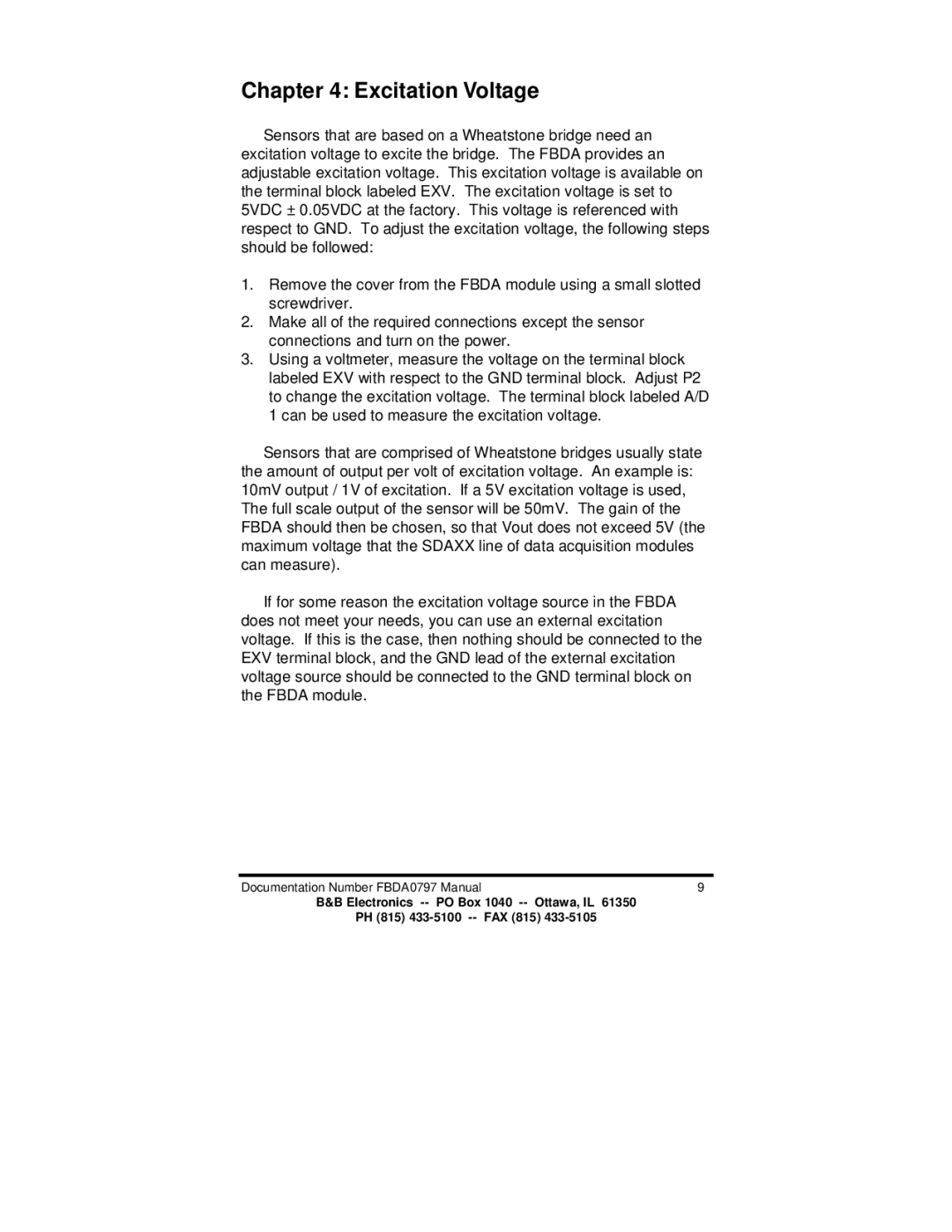FBDA specifications
B&B Electronics’ FBDA series stands as a testament to innovation in the realm of data communication and networking solutions. These robust devices are designed to facilitate seamless data transmission, making them an essential component for various industrial applications. Thanks to their advanced features and technologies, the FBDA devices are suitable for demanding environments where reliability and performance are critical.One of the standout characteristics of the FBDA series is its support for multiple communication protocols. This versatility ensures that users can integrate the devices into diverse systems without facing compatibility issues. The FBDA supports protocols such as RS-232, RS-422, and RS-485, making it an ideal choice for various applications, from serial communications in a factory setting to remote data acquisition in agricultural or environmental monitoring systems.
The FBDA incorporates advanced signal processing technologies that enhance data integrity over long distances. With features like advanced error-checking mechanisms and robust anti-jamming capabilities, the FBDA ensures that data remains accurate and reliable, even in electrically noisy environments. This capability is particularly valuable in industrial settings where electromagnetic interference can often disrupt signals.
Another distinguishing feature of the FBDA series is its compact and sturdy design, which allows for easy integration into existing systems without requiring extensive modifications. The rugged build quality ensures durability, making the devices suitable for harsh conditions, including extreme temperatures and vibrations commonly found in industrial installations.
Moreover, the FBDA series is equipped with user-friendly interfaces that facilitate easy configuration and monitoring. Many models come with features like LED indicators to provide real-time feedback on the operational status, allowing for quick troubleshooting and maintenance. Additionally, the devices often have intuitive software options that make setup and adjustment straightforward, enabling users to maximize functionality with minimal effort.
Power efficiency is another key characteristic of the FBDA series. Designed to operate at low power consumption levels, these devices help minimize energy costs while maintaining high performance. This feature is particularly beneficial for applications in remote locations where power availability may be limited.
In conclusion, B&B Electronics’ FBDA devices exemplify cutting-edge technology in data communication, combining multiple protocol support, robust signal processing, durable design, user-friendly interfaces, and energy efficiency. Their versatility and reliability make them an invaluable asset for any industrial or commercial application needing efficient data communication solutions.
